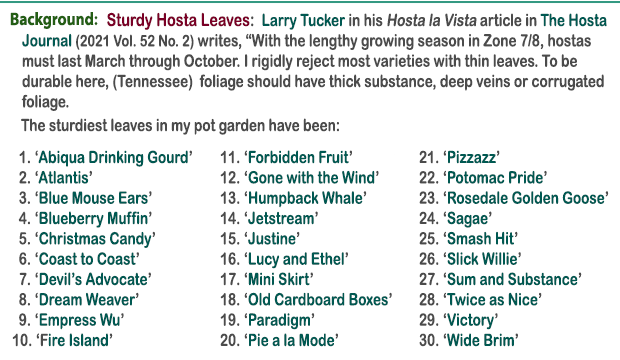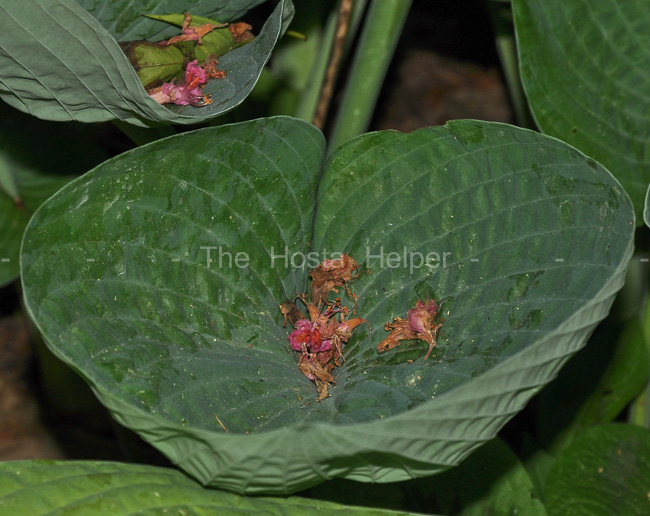|
  This hostas was originated by
Dr. Charles Purtymun at Walden West Nursery
in Oregon. He
registered it in 1989 as a
hybrid of H. 'Tokudama'
× H. 'Sieboldiana'
. As the name implies, it is noted for its heavily cupped leaves and
corrugated, blue-green foliage.
This large size (24 inches high) plant has near white flowers from late June into July
followed by viable seeds. This hostas was originated by
Dr. Charles Purtymun at Walden West Nursery
in Oregon. He
registered it in 1989 as a
hybrid of H. 'Tokudama'
× H. 'Sieboldiana'
. As the name implies, it is noted for its heavily cupped leaves and
corrugated, blue-green foliage.
This large size (24 inches high) plant has near white flowers from late June into July
followed by viable seeds.
The Hostapedia by Mark Zilis (2009), says that this plant falls into a group in the H. 'Sieboldiana' species and consists of "registered
seedlings that have either 'Elegans' or an 'Elegans' sport (e.g. 'Frances
Williams', 'Northern
Halo', etc.) as a parent. All of these have blue-green
foliage
and represent the range of 'Elegans' types that can be
found. Its combination of cupping, rich blue-green color, and
corrugation makes it a superior specimen plant in the garden. It
also has value as a breeding plant."
According to
The Hostapedia by
Mark Zilis (2009), this cultivar "...is the most well-known of the Abiquas. Even more significantly, it sets the standard for
cupping in hostas..."
 From the
Field Guide to Hostas by Mark Zilis (2014), "Its combination of cupping, rich blue-green color, and
corrugation makes it a superior specimen plant in the garden. It
also has value as a breeding plant." From the
Field Guide to Hostas by Mark Zilis (2014), "Its combination of cupping, rich blue-green color, and
corrugation makes it a superior specimen plant in the garden. It
also has value as a breeding plant."
The New Encyclopedia of Hostas by
Diana
Grenfell (2009) states: "Protect from strong wind. Avoid planting directly
under a tree to prevent detritus falling into the
leaves...Depth of the leaf cupping can be up to 4 in (10 cm).
The powdery gray underside of the leaves is often visible
because of the cupping."


|





